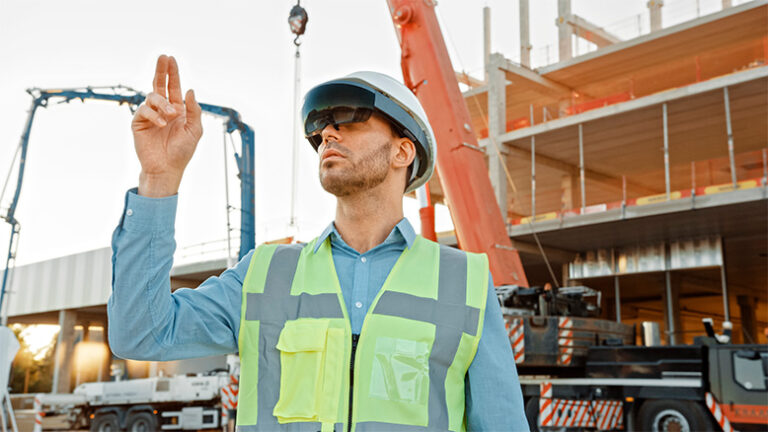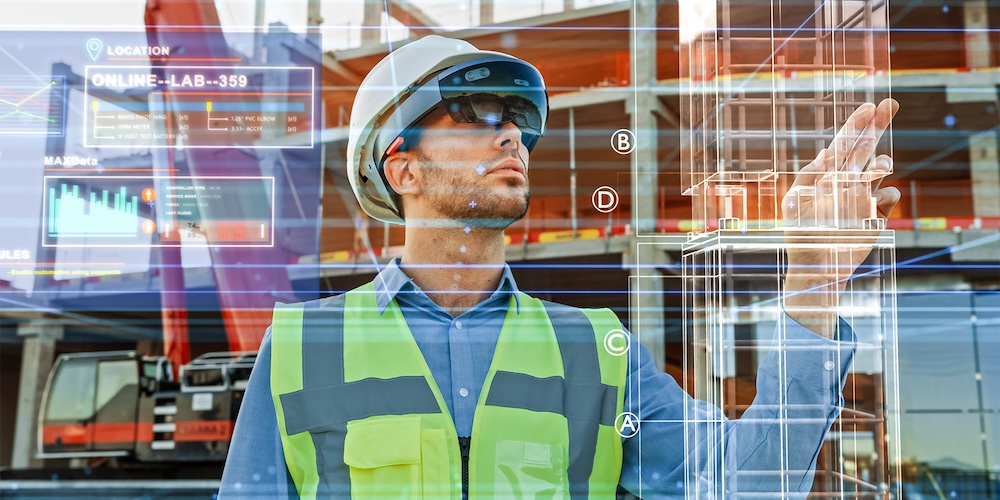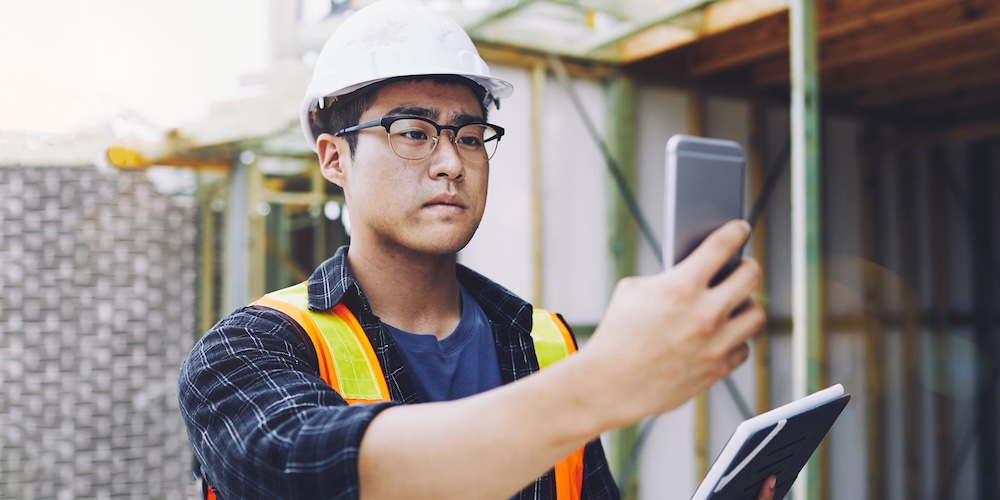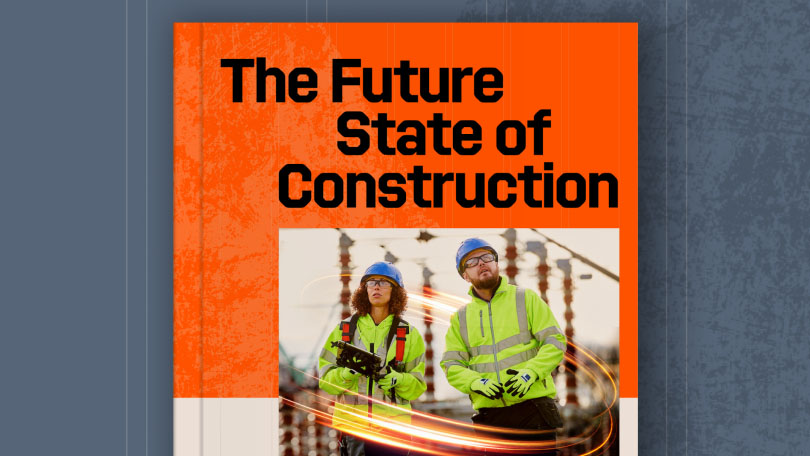— 7 min read
How the Internet of Things Transforms Construction Sites


Last Updated Sep 15, 2025

Nicholas Dunbar
Content Manager
62 articles
Nick Dunbar oversees the creation and management of UK and Ireland educational content at Procore. Previously, he worked as a sustainability writer at the Building Research Establishment and served as a sustainability consultant within the built environment sector. Nick holds degrees in industrial sustainability and environmental sciences and lives in Camden, London.

Zoe Mullan
27 articles
Zoe Mullan is an experienced content writer and editor with a background in marketing and communications in the e-learning sector. Zoe holds an MA in English Literature and History from the University of Glasgow and a PGDip in Journalism from the University of Strathclyde and lives in Northern Ireland.
Last Updated Sep 15, 2025

Construction sites share three common goals: enhancing safety, boosting intelligence, and maximising efficiency. The Internet of Things (IoT) now delivers on all three, connecting equipment, materials, and workers to create streamlined, data-driven workflows. What began as an obscure buzzword has evolved into a competitive necessity that transforms how the industry plans, builds, and delivers projects.
Understanding IoT's key applications, benefits, and challenges reveals how this technology reshapes construction and accelerates company growth.
Table of contents
What IoT Means for Construction
IoT in construction creates a network of connected devices and sensors that gather and exchange real-time data across project sites. This technology bridges the physical site with digital intelligence, connecting everything from machinery and materials to structural components and workers themselves.
More specifically, in practical terms, IoT connects tools and equipment to digital systems that track performance, spot problems early, and trigger automatic responses. For instance, sensors on a concrete pump alert teams when pressure drops unexpectedly or automatically shut down the equipment to prevent faults. This predictive insight gives contractors greater control over safety, scheduling, and resource management.
In addition to direct equipment monitoring, various sensors detect movement, environmental changes, and equipment wear before issues arise, whilst wearables track worker location and wellbeing. Together, these technologies reduce risk, minimise downtime, and improve project outcomes.
Beyond current applications, the adoption rate continues to accelerate. With smarter, more sustainable builds becoming industry priorities, experts predict significant growth in the global IoT construction market over the coming years.
Learn about the future of the built environment - Read Procore's Future State of Construction report
Learn how contractors, subcontractors, and project teams can take advantage of new opportunities to boost efficiency and profitability over the next decade. Download the report to get your roadmap to the future state of construction.

Key Applications and Benefits
IoT functions as a layered network of smart technologies that work together to transform site operations. From wearable sensors to intelligent building systems, these applications create significant impact across safety, efficiency, sustainability, and collaboration:
Enhanced Safety
Connected devices monitor worker locations and environmental hazards in real time. Wearable sensors alert supervisors when someone enters restricted areas or stops moving, while equipment sensors flag dangerous vibrations or excessive noise. This proactive approach prevents accidents before they occur and triggers faster emergency responses.
Streamlined Project Management
Building on these safety improvements, IoT provides better visibility over equipment, materials, and task progress. Real-time data feeds into central dashboards, enabling managers to track progress against schedules, detect delays early, and reallocate resources as needed. Consequently, site operations become more agile and responsive.
Optimised Resources and Sustainability
In terms of environmental impact, IoT systems track fuel usage, energy consumption, water flow, and material waste, helping contractors reduce overuse and improve sustainability efforts. Smart bins alert teams when they reach capacity, while energy systems adjust output based on site activity. These small efficiencies accumulate into significant savings over time.
Predictive Maintenance
Moving beyond reactive maintenance, IoT sensors detect early signs of equipment wear and create alerts before failures occur. This approach minimises downtime, extends machinery lifespan, and keeps projects moving with fewer unexpected stoppages.
Digital Twins and Advanced Visualisation
Data from IoT devices feeds into digital twins – virtual models that reflect real-world site conditions. These tools help teams simulate changes, monitor progress, and test decisions before implementation. As a result, projects experience fewer mistakes, smoother coordination, and better outcomes.
Smart Building Integration
Extending beyond the construction phase, IoT doesn't end when construction finishes. Smart buildings use sensors to monitor energy use, occupancy, and temperature to optimise comfort and efficiency. Designing with IoT principles creates structures that remain as intelligent as the processes that built them.
Improved Communication
IoT devices bridge communication gaps between teams, particularly on large or complex sites. Through automated alerts, live location tracking, and data dashboards, IoT ensures the correct information reaches the right people at the right time.
Increased Productivity
Ultimately, IoT streamlines operations by reducing delays, accelerating decision-making, minimising rework, and optimising labour and equipment use. By removing guesswork, connected technologies free up time for teams to focus on core construction tasks.
Implementation Challenges
However, despite these clear benefits, several challenges emerge when implementing IoT in construction projects:
Data Security and Privacy
More devices collecting data on workers, equipment, and site conditions introduce cybersecurity concerns. Construction teams must ensure sensitive data – including worker locations and site operations – remains secure and accessible only to authorised personnel. Fortunately, UK law now requires manufacturers to protect consumers from hackers accessing internet-connected devices, making the UK the first country to introduce such legislation. However, teams still need to understand cybersecurity basics and recognise various attack methods.
Integration and Compatibility
Additionally, many contractors already use multiple legacy systems, platforms, and hardware. Integrating new IoT tools into existing ecosystems and ensuring seamless communication between systems creates complexity. Without effective interoperability, data silos persist and limit IoT's full value.
Connectivity Issues
Similarly, not every site enjoys stable connectivity, particularly in remote or rural areas. IoT devices require reliable data transmission through Wi-Fi, mobile networks, or low-power wide-area networks (LPWANs). Weak or intermittent signals create data gaps, missed alerts, and delayed insights.
Skills Gap and Training
On the human side, IoT introduces new working methods. Without adequate training, adoption stalls and teams underutilise the technology. Therefore, ensuring teams understand how to use, interpret, and maintain IoT systems becomes as important as acquiring the technology.
Cost and ROI
Finally, upfront investment in devices, platforms, and connectivity infrastructure can be substantial. Companies must balance costs against potential long-term efficiency and safety gains. While demonstrating return on investment takes time, many find the eventual payoff worthwhile
Common IoT Devices in Construction
IoT's power lies in its hardware – the physical devices integrated across sites that collect and transmit data. The most common types used in UK construction today include:
Wearable Sensors
Smart helmets and wristbands track worker location, monitor fatigue, detect falls, and check PPE compliance. Tools like Reactec's vibration monitoring devices and Spot-r by Triax already operate on UK sites, helping supervisors stay informed and respond quickly to safety issues.
Equipment Sensors
In contrast to wearables, IoT-enabled sensors attached to plant and machinery track engine hours, fuel usage, and mechanical stress. Systems like Caterpillar's VisionLink and Komatsu Smart Construction help contractors optimise fleet performance, monitor maintenance needs, and reduce downtime.
Building Sensors
These devices measure environmental conditions, including air quality, vibration, humidity, and temperature. They're commonly used for structural monitoring and improving site safety and working conditions. Providers like Disperse and Leica Geosystems integrate directly into planning tools and BIM workflows.
Smart Materials
Construction materials can embed sensors – for example, concrete moisture sensors provide data on performance, curing progress, and structural integrity. Giatec SmartRock and Converge are among the most commonly used concrete sensors.
IoT-Enabled Drones
Equipped with cameras and sensors, drones monitor site activity, track progress, and inspect hard-to-reach areas. Data captured from aerial surveys feeds directly into planning tools, enabling faster decision-making and more accurate reporting. Tools like the DJI Phantom 4 RTK and Propeller Aero mapping solutions integrate easily into digital workflows, supporting remote planning and visualisation.
GPS Trackers
These devices monitor vehicle, machinery, and high-value material locations, helping reduce theft and improve fleet logistics across multiple job sites. Popular solutions include Trackunit and JCB LiveLink, which provide live data on machine location and usage.
Smart Waste Management
Bins fitted with fill-level sensors notify teams when they need emptying, managing waste more efficiently. Some systems also categorise waste types for recycling, helping sites meet sustainability targets. Examples include SmartBin and Enevo.
The Future of Connected Construction
In conclusion, the Internet of Things has moved beyond smart homes and high-tech offices to become a cornerstone of modern construction. With everything connected and synchronised, IoT transforms how sites are planned, executed, and maintained. For contractors and project teams, the question has shifted from whether to adopt IoT to how to implement it strategically.
Through careful integration and proper training, connected technologies drive stronger margins and more sustainable outcomes. As the industry evolves, IoT will play an increasingly central role in shaping construction's future.
Looking ahead, the convergence of IoT with AI and digital twins promises to further revolutionise construction decision-making through smarter forecasting, automated site planning, and even greater safety improvements. The construction sites of tomorrow will be more intelligent, efficient, and safer than ever.
Categories:
General Industry, Project Management, Resource Management, Tech and Data
Written by

Nicholas Dunbar
Content Manager | Procore
62 articles
Nick Dunbar oversees the creation and management of UK and Ireland educational content at Procore. Previously, he worked as a sustainability writer at the Building Research Establishment and served as a sustainability consultant within the built environment sector. Nick holds degrees in industrial sustainability and environmental sciences and lives in Camden, London.
View profile
Zoe Mullan
27 articles
Zoe Mullan is an experienced content writer and editor with a background in marketing and communications in the e-learning sector. Zoe holds an MA in English Literature and History from the University of Glasgow and a PGDip in Journalism from the University of Strathclyde and lives in Northern Ireland.
View profileExplore more helpful resources

Control the Chaos: Standardising Document Workflows in Construction Projects
Document control and implementation play a central role in managing risk, meeting deadlines, and delivering projects to spec. As builds become more complex and teams increasingly disperse, the volume and...

Cost-Plus Construction Contracts in the UK
A construction cost-plus contract – sometimes called a cost-reimbursable or prime cost contract – reimburses all project costs and adds a fee to cover the contractor’s overhead and profit. UK...

Digital Construction Technology for Whole-Life Value
For decades, the construction industry has kept a narrow focus on capital cost — the one-time, upfront costs of a construction project. While in the short term this seems like...

UK Construction Progress Reports: Tools for Smarter Site Management
Construction progress reports track completed work, on site issues, costs, and safety so UK project teams can demonstrate progress, secure payments, and stay on programme. Accurate progress data is essential...
